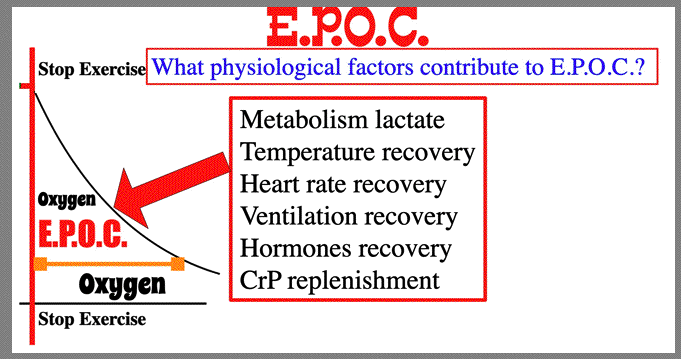| April 27-May 1: Hormones of Exercise OBJECTIVES: Be able to explain how negative feedback systems work Be able to describe how antidiuretic hormone's negative feedback system functions Be able to explain and draw how the negative feedback system breaks down with Type 2 diabetes Be able to describe the insulin to insulin protein receptor mechanism in activating the GULT4 protein Be able to discuss the role of growth hormone, epinephrine, norepinephrine, aldosterone, and cortisol with exercise Be able to discuss hormonal regulation of glucose metabolism Be able to explain the homone regulation of fat metabolism Be able to explain and draw oxygen deficit and E.P.O.C. and answer questions on both of these physiological phenomenon Be able to explain the best altitude training method and why Click Here to Download Exam 4 Part B Hormones of Exercise We begin our hormones of exercise with a definition of endocrine, which means hormone secreting Hormone regulation in the human body is a negative feedback system. This literally means that the response of the body opposes the initial stimulus Class, please watch this Youtube video below. In this YouTube video the major hormones of exercise are discussed. Initially, there is a review of how negative feedback systems work in the body. This is followed by exploring the steps of the negative feedback system with antidiuretic hormone (ADH). The breakdown of the negative feedback system (not working) is analyzed with persons with type 2 diabetes. Other exercise hormones, and their functions to exercise, such as growth hormone, aldosterone, epinephrine, norepinephrine, cortisol, insulin and glucagon are discussed. Lastly, hormonal regulation of carbohydrate and fat metabolism is presented. https://youtu.be/EgKaf6clhFc |
||||||||
|
|
||||||||
| Negative Feedback System: Antidiuretic Hormone | ||||||||
 |
||||||||
|
|
||||||||
| Negative Feedback System Not Working with Type 2 Diabetes | ||||||||
 |
||||||||
| Closer Discussion on Type 2 Diabetes: From the Youtube video and slide below, be able to describe how insulin binds with its insulin protein receptor which signals the GLUT4 Protein. | ||||||||
 |
||||||||
| Hormones of Exercise: Growth Hormone and Aldosterone |
||||||||
| Growth hormone (GH), released from the anterior lobe of the pituitary gland is an anabolic hormone. Uniquely, GH also stimulates lipolysis, the disassembly of triglicerides (TG) in fat tissue. In muscle, growth hormone stimulates the uptake of TG for utilization or storage. The response of GH is proportional to the exercise intensity. Higher intensity execise leads to a greater GH response. Aldosterone is quite involved with electrolyte balance, particularly with sodium and postassium in nerve and muscle contraction. Hormones of Exercise: Epinephrine and Norepinephrine |
||||||||
 |
||||||||
| Cortisol and Protein Synthesis Inhibition | ||||||||
 |
||||||||
| Plasma Glucose Hormonal Regulation and Hormonal Regulation of Fat Metabolism | ||||||||
| Explain the plasma glucose hormonal regulation mechanism? Glucago, epinephrine and norepinephrine all increase the body's ability to do glycogenolysis (breakdown in glycogen in muscle and liver). Thus, in short burst exercise, these hormones increase glucose availability 40% to 50%. Explain the hormonal regulation of fat metabolism. Epinephrine, norepinephrine, growth hormone and cortisol all increase the body's oxidation of fats. Insulin, contrariwise, is the stronest inhibitor of fat metabolism before and during exericse. Why do insulin levels drop in trained and untrained individuals doing continuous aerobic exerise? |
||||||||
 |
||||||||
 |
||||||||
| What variable has the greatest influence on E.P.O.C.? Intensity of exercise. How long does E.P.O.C. last? Class, this is a big debate in Exerise Physiology research. The best research suggests it lasts up to 14 hours and is very dependent on the intensity and length of the execise workout. Does resistance training have an E.P.O.C.? Yes, with the contractile activity of resistance exercies there is an elevation of lactate, hormones (glycolytic), muscle temperature, phosphagen energy (depletion), and heart rate. These are all factors that contribute to E.P.O.C. |
||||||||
| Special Topic: Altitude Training | ||||||||
| What are the three most common altitude training methods? 1) Live low, train high |
||||||||
| What is the BEST method and why? Answer = Live high, train low Let's discuss why. The MOST effective altitude training method is “live high, train low” which involves living at altitude and training at sea level. This is because we are able to initiate erythropoiesis (increased red blood cell production) during rest and are able to train at a higher intensity while exercising at a lower altitude. SUPPLEMENTAL READING BELOW: The “live low, train high” method involves living at sea level and training at high altitude. This is the least effective altitude training method because of the lower partial pressure of oxygen associated with high altitude. “Live high, train high” requires an individual to live at altitude and train at altitude. This only produces small improvements in exercise performance. |
||||||||
 |
||||||||
| This Concludes our Hormones of Exercise Unit! |
||||||||
| Exam 4 Part B: Click here to get questions: Exam 4 Part B is due by midnight on May 1. No late papers accepted. |
||||||||
|